Geoclima chillers in the data center cooling system
In this post we will talk about chillers. Chillers are an important and necessary part of the cooling system of any large data center. This is not the only technology, but one of the most reliable and proven. Inside the post - more than two dozen photos and information about how we use Geoclima chillers in our data center, the pros, cons and nuances of operation.

')
If you do not go into details, the chillers are high-performance pumps that drive the refrigerant along the cooling circuit. They chill the refrigerant and feed it through the pipe system to the air conditioners. The latter use the refrigerant to cool the air and give it back already heated. The refrigerant is re-cooled and re-sent to the circuit.
It is known from a school physics course that water is the best coolant among non-specialized liquids. Water cooling systems are widespread and are even found in the home computers of some especially enthusiastic Habralyas. Most often, water is used for cooling at large plants and power plants.
But for chillers in the Russian conditions it is impossible to use only water. In winter, it will simply freeze, the data center will remain without cooling, and the chillers will break. Therefore, to work in the northern countries, and Russia among them, it is recommended to use a solution of water and ethylene glycol. This substance belongs to the group of alcohols, has no color and smell, and the consistency is slightly denser than water. You can not drink it, ethylene glycol is toxic. Therefore, pumping refrigerant from chillers is not to be feared. The minimum consistency of ethylene glycol in the refrigerant is 35%. We use a 40 percent solution and are quite pleased with it. Such concentration allows not to be afraid that the refrigerant will freeze even in the most severe frost. This winter we had a good opportunity to make sure of this, and we were convinced.
In our data center, we use Italian chillers Geoclima. Italians over the past century have eaten a lot of dogs on conditioning and cooling, earning themselves a reputation, if not the best producers of such systems, then some of the best. Geoclima equipment is used throughout the world, including in Russia, where it serves many ice complexes.
The most powerful chillers are made to order and often do not pass through the current company nomenclature. It happened with our systems, information about which is practically absent on the network, as well as the photo. Therefore, Habr will be almost the only resource with more or less clear photographs of Geoclima TMA 1200 and TMA 1300. We have two models installed. The design power of the TMA 1200 is 1600 kW, while that of the TMA 1300 is 1800 kW. In practice, the actual power often exceeds the estimated power and serves as a kind of reserve “just in case”. Well, as they say, the stock pocket does not pull.
The advantages of these chillers are, first of all, a reliable and durable frame construction: all components and mechanisms are mounted inside a solid frame, which makes the chillers a bit like sea containers at first glance. Well, the mechanics itself, of course, to match the specified level. Excellent property in the Russian reality - the security of nodes from external damage. Fans located on top, do not freeze in the winter and get rid of snow on their own, even if the chiller is idle for some time. As a result, there is no damage from ice and snow plugs. Sophisticated design provides a very low (for units of impressive power) noise level. This is especially important when chillers are installed in an urban environment - an extra noise can cause a lot of problems. It is also worth praising the automatic system for adjusting the operating parameters. Its electronics is very sane, it tracks and adjusts the pressure of the refrigerant and the rate of its exchange, depending on the slightest change in temperature, literally a couple of degrees.
There are chillers and minuses, as without them. We must pay tribute to the design - its not the most pleasant details are manifested only in unusual conditions of operation, in severe frost. The only noticeable drawback we noticed during the operation lies in the vinyl pipes of the circulation system. In the cold, they lose elasticity and "dubeyut." A metal fitting in accordance with the laws of physics is reduced in volume. Quite a bit, but it can lead to leakage - yet the fluid circulates under pressure. The problem was solved by additional clamps, and then not immediately. But in the end we got rid of leaks, even minor ones. In Geoclima, to the credit of the company, the existence of the problem was recognized and in every possible way promoted its early resolution through Russian partner companies. This adds to the company "advantages in karma", because its competitors in their mass provide a guarantee only for key components and mechanisms, but not for auxiliary elements.
Our installation is somewhat out of the Geoclima portfolio, so, in response to our reports of some problems, the CEO of the company arrived at the site during a business trip. It is worth noting that all our wishes were carefully recorded, we received assistance in replacing pipes and assurances that changes would be made to the design of new chillers for shipment to freezing Russia. This is how we managed to contribute to the development of the “chiller movement” in the world.
It would not hurt to get a self-regulating mechanism for bleeding off excess air in tanks. For example, at pressures up to 3 atmospheres, the valve is securely closed, and if this value is exceeded, it begins to slowly release excess air. We hope the company will listen to our wishes.
Of the remaining “best practices” accumulated in the process of using chillers, only tips from our service department remain: cleaning input grids from sticking dust, lint, debris and insects is best with an industrial vacuum cleaner, and to increase pep - to drink delicious tea.
General view of the chillernaya.

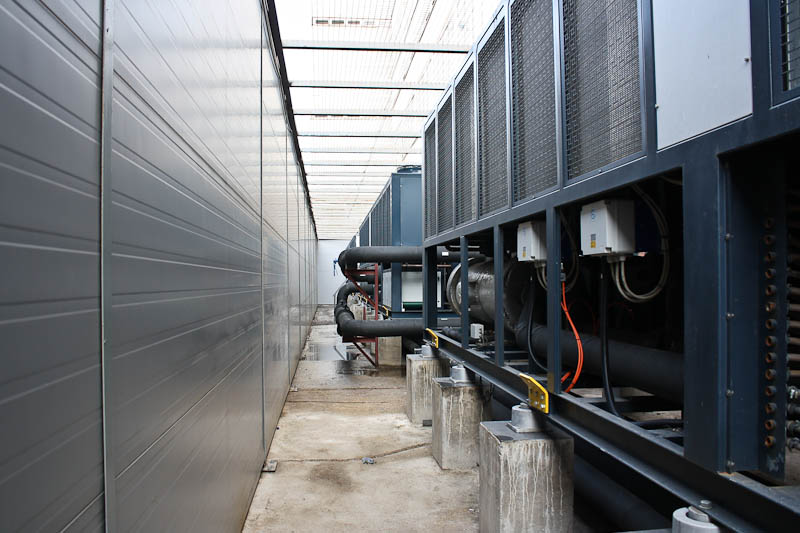
Pipe system
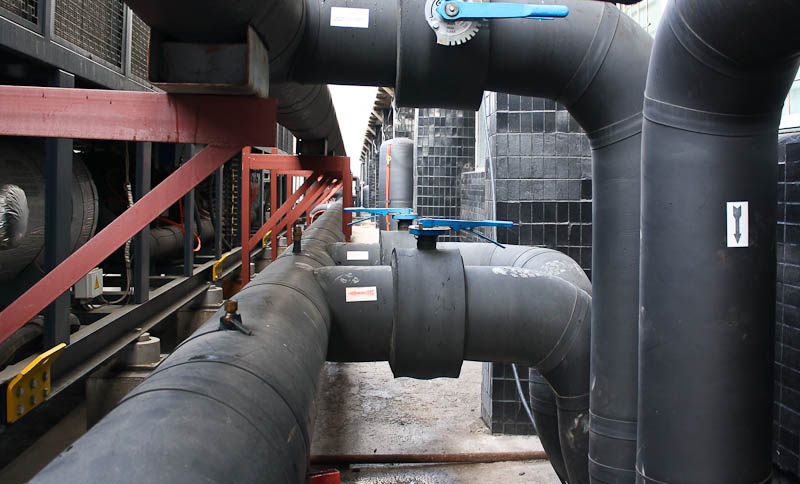
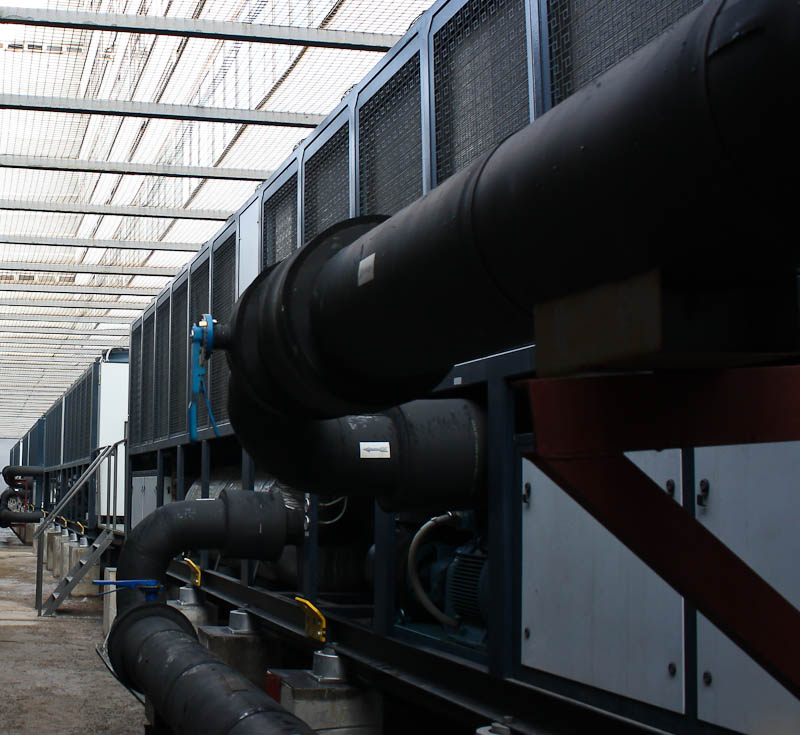
Locking mechanisms for insulated pipes.
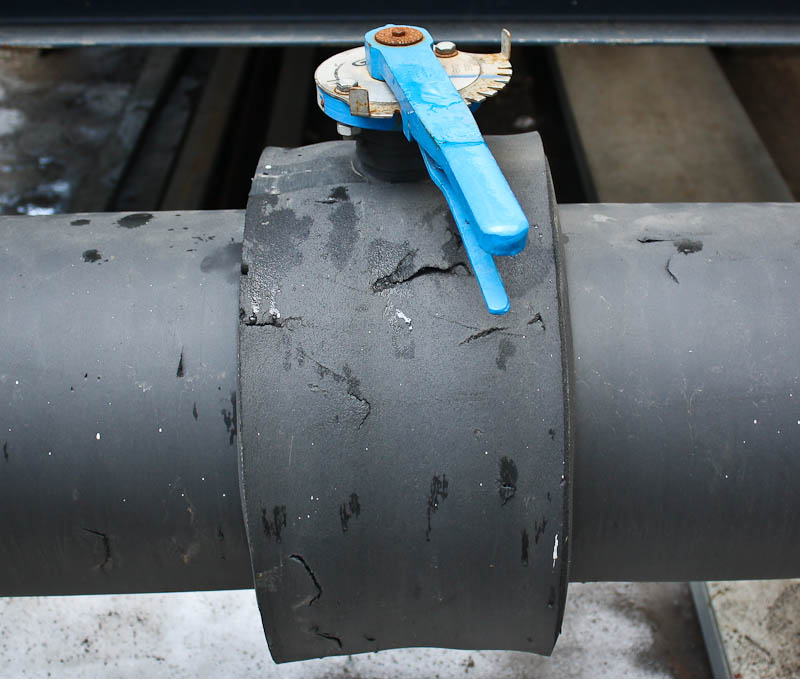
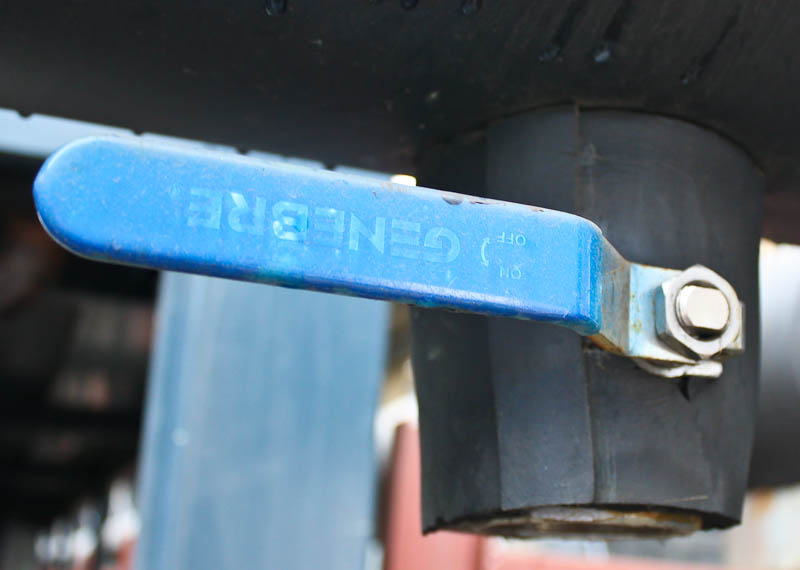
One of the tanks for the solution.
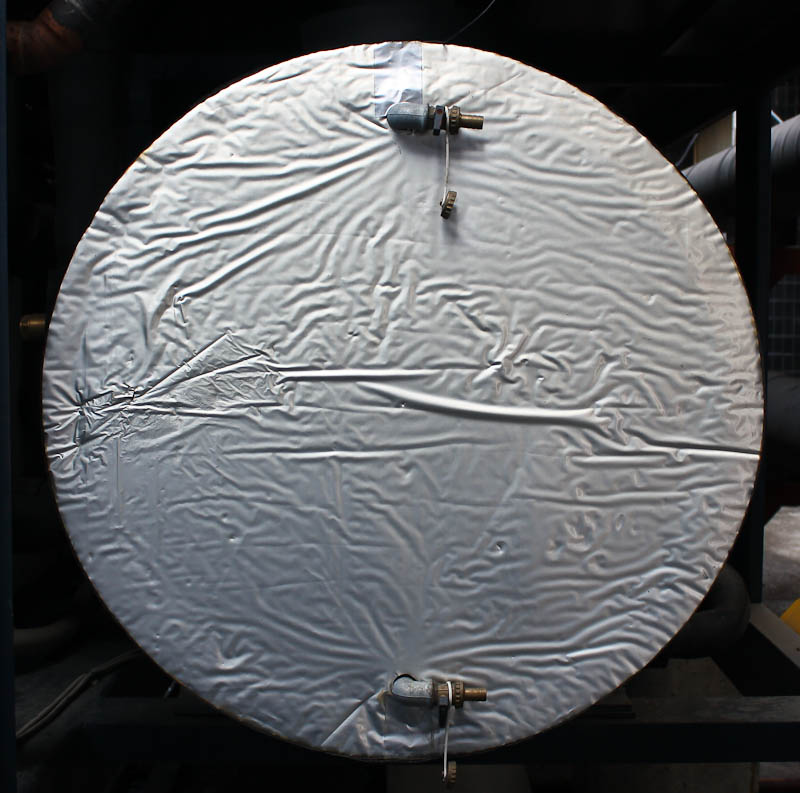
Part of the circulation system. Pipe material is copper.

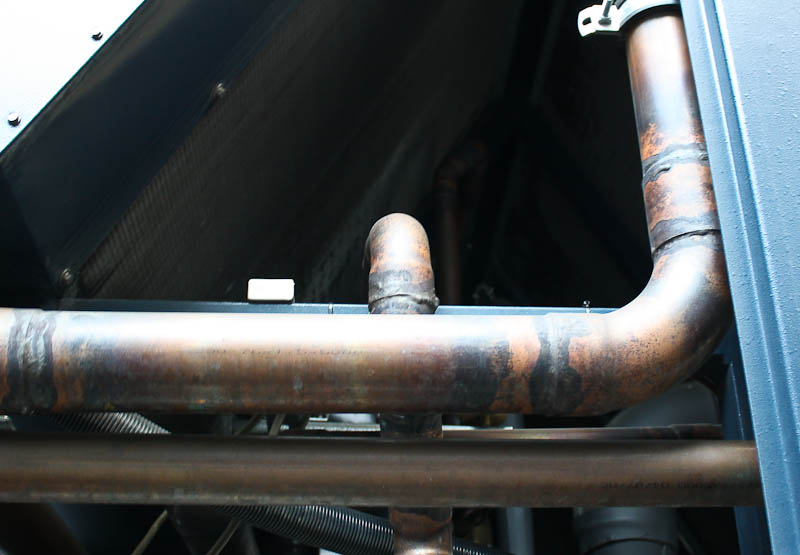
One of the superchargers.
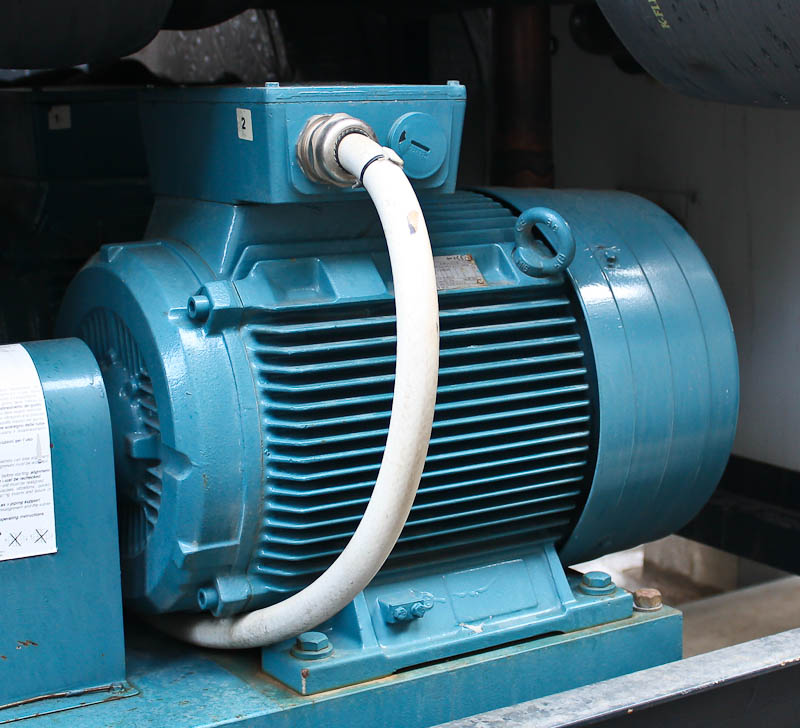
Pressure gauges suction and discharge solution.

Side suction grilles.
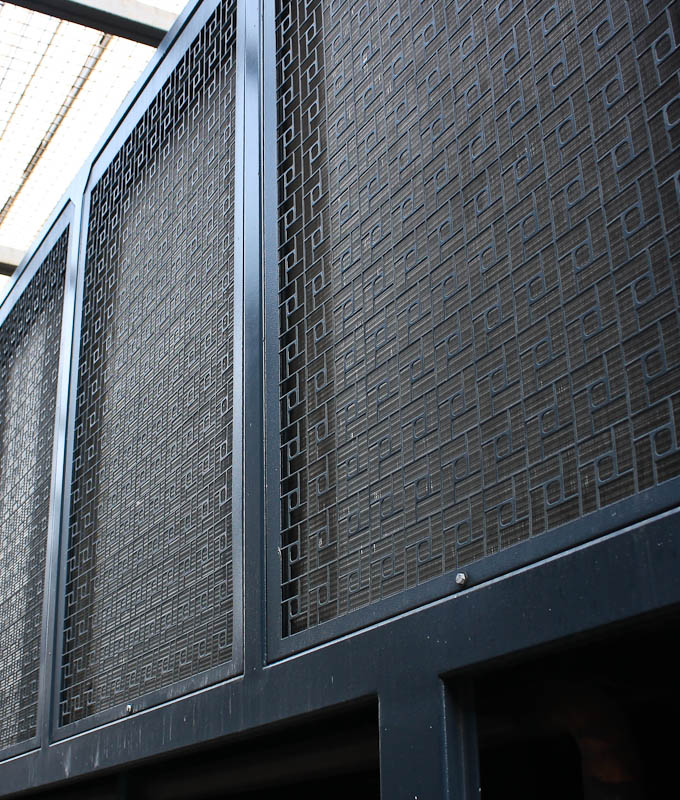
Fan speed controller.
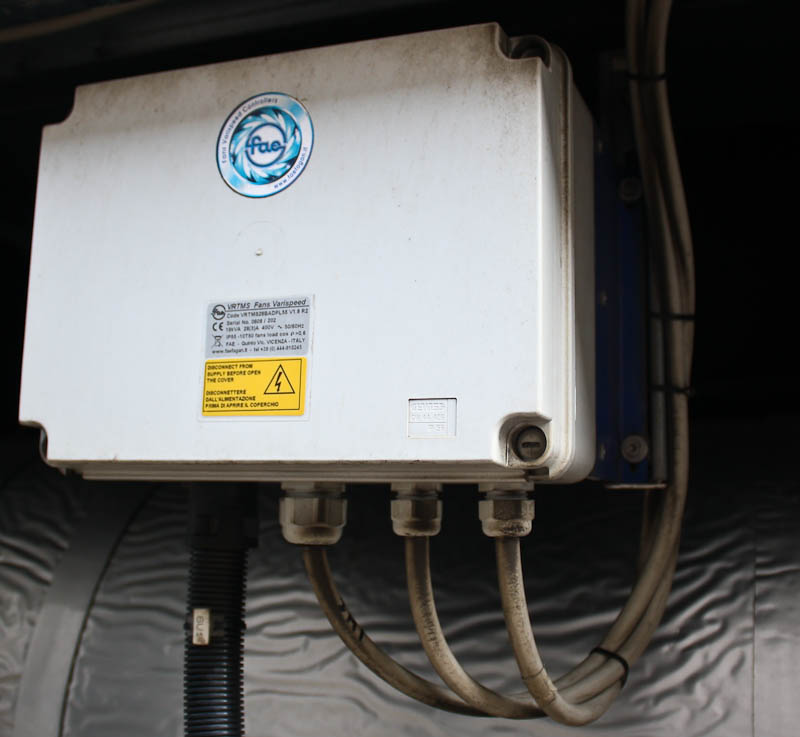
Parts of the system.
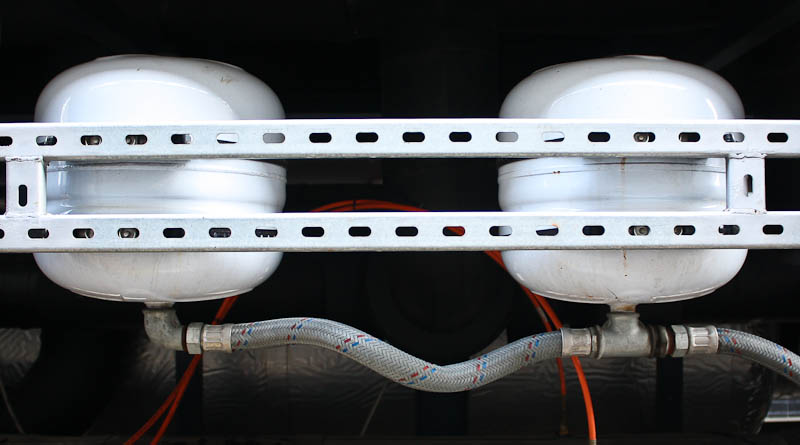

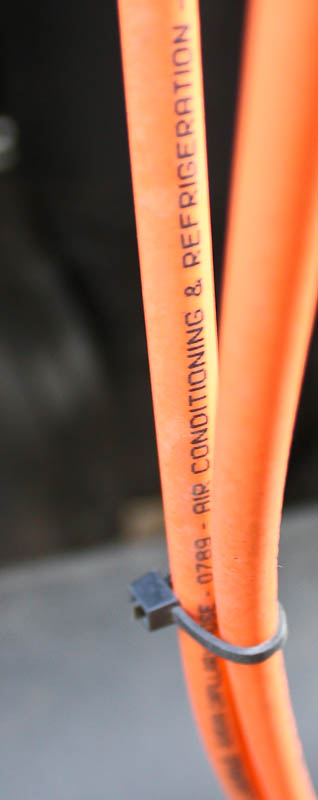
Display with the main parameters of work. If something is wrong, the display shows information about the problem.
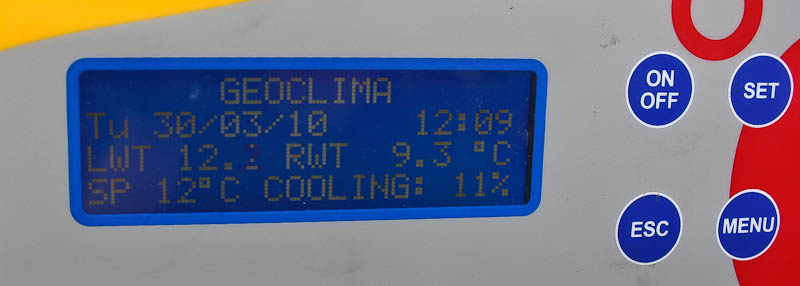
Racks and foundation. To multi-ton engines you need a solid foundation.

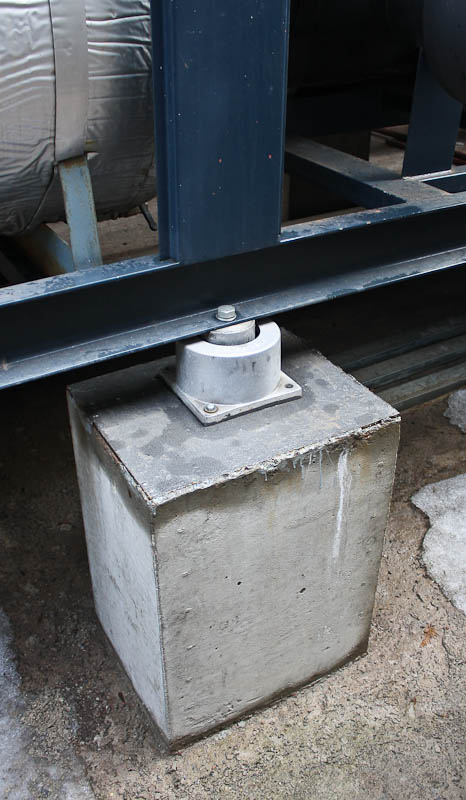

')
If you do not go into details, the chillers are high-performance pumps that drive the refrigerant along the cooling circuit. They chill the refrigerant and feed it through the pipe system to the air conditioners. The latter use the refrigerant to cool the air and give it back already heated. The refrigerant is re-cooled and re-sent to the circuit.
It is known from a school physics course that water is the best coolant among non-specialized liquids. Water cooling systems are widespread and are even found in the home computers of some especially enthusiastic Habralyas. Most often, water is used for cooling at large plants and power plants.
But for chillers in the Russian conditions it is impossible to use only water. In winter, it will simply freeze, the data center will remain without cooling, and the chillers will break. Therefore, to work in the northern countries, and Russia among them, it is recommended to use a solution of water and ethylene glycol. This substance belongs to the group of alcohols, has no color and smell, and the consistency is slightly denser than water. You can not drink it, ethylene glycol is toxic. Therefore, pumping refrigerant from chillers is not to be feared. The minimum consistency of ethylene glycol in the refrigerant is 35%. We use a 40 percent solution and are quite pleased with it. Such concentration allows not to be afraid that the refrigerant will freeze even in the most severe frost. This winter we had a good opportunity to make sure of this, and we were convinced.
In our data center, we use Italian chillers Geoclima. Italians over the past century have eaten a lot of dogs on conditioning and cooling, earning themselves a reputation, if not the best producers of such systems, then some of the best. Geoclima equipment is used throughout the world, including in Russia, where it serves many ice complexes.
The most powerful chillers are made to order and often do not pass through the current company nomenclature. It happened with our systems, information about which is practically absent on the network, as well as the photo. Therefore, Habr will be almost the only resource with more or less clear photographs of Geoclima TMA 1200 and TMA 1300. We have two models installed. The design power of the TMA 1200 is 1600 kW, while that of the TMA 1300 is 1800 kW. In practice, the actual power often exceeds the estimated power and serves as a kind of reserve “just in case”. Well, as they say, the stock pocket does not pull.
The advantages of these chillers are, first of all, a reliable and durable frame construction: all components and mechanisms are mounted inside a solid frame, which makes the chillers a bit like sea containers at first glance. Well, the mechanics itself, of course, to match the specified level. Excellent property in the Russian reality - the security of nodes from external damage. Fans located on top, do not freeze in the winter and get rid of snow on their own, even if the chiller is idle for some time. As a result, there is no damage from ice and snow plugs. Sophisticated design provides a very low (for units of impressive power) noise level. This is especially important when chillers are installed in an urban environment - an extra noise can cause a lot of problems. It is also worth praising the automatic system for adjusting the operating parameters. Its electronics is very sane, it tracks and adjusts the pressure of the refrigerant and the rate of its exchange, depending on the slightest change in temperature, literally a couple of degrees.
There are chillers and minuses, as without them. We must pay tribute to the design - its not the most pleasant details are manifested only in unusual conditions of operation, in severe frost. The only noticeable drawback we noticed during the operation lies in the vinyl pipes of the circulation system. In the cold, they lose elasticity and "dubeyut." A metal fitting in accordance with the laws of physics is reduced in volume. Quite a bit, but it can lead to leakage - yet the fluid circulates under pressure. The problem was solved by additional clamps, and then not immediately. But in the end we got rid of leaks, even minor ones. In Geoclima, to the credit of the company, the existence of the problem was recognized and in every possible way promoted its early resolution through Russian partner companies. This adds to the company "advantages in karma", because its competitors in their mass provide a guarantee only for key components and mechanisms, but not for auxiliary elements.
Our installation is somewhat out of the Geoclima portfolio, so, in response to our reports of some problems, the CEO of the company arrived at the site during a business trip. It is worth noting that all our wishes were carefully recorded, we received assistance in replacing pipes and assurances that changes would be made to the design of new chillers for shipment to freezing Russia. This is how we managed to contribute to the development of the “chiller movement” in the world.
It would not hurt to get a self-regulating mechanism for bleeding off excess air in tanks. For example, at pressures up to 3 atmospheres, the valve is securely closed, and if this value is exceeded, it begins to slowly release excess air. We hope the company will listen to our wishes.
Of the remaining “best practices” accumulated in the process of using chillers, only tips from our service department remain: cleaning input grids from sticking dust, lint, debris and insects is best with an industrial vacuum cleaner, and to increase pep - to drink delicious tea.
General view of the chillernaya.


Pipe system


Locking mechanisms for insulated pipes.


One of the tanks for the solution.

Part of the circulation system. Pipe material is copper.


One of the superchargers.

Pressure gauges suction and discharge solution.

Side suction grilles.

Fan speed controller.

Parts of the system.



Display with the main parameters of work. If something is wrong, the display shows information about the problem.

Racks and foundation. To multi-ton engines you need a solid foundation.


Source: https://habr.com/ru/post/89452/
All Articles